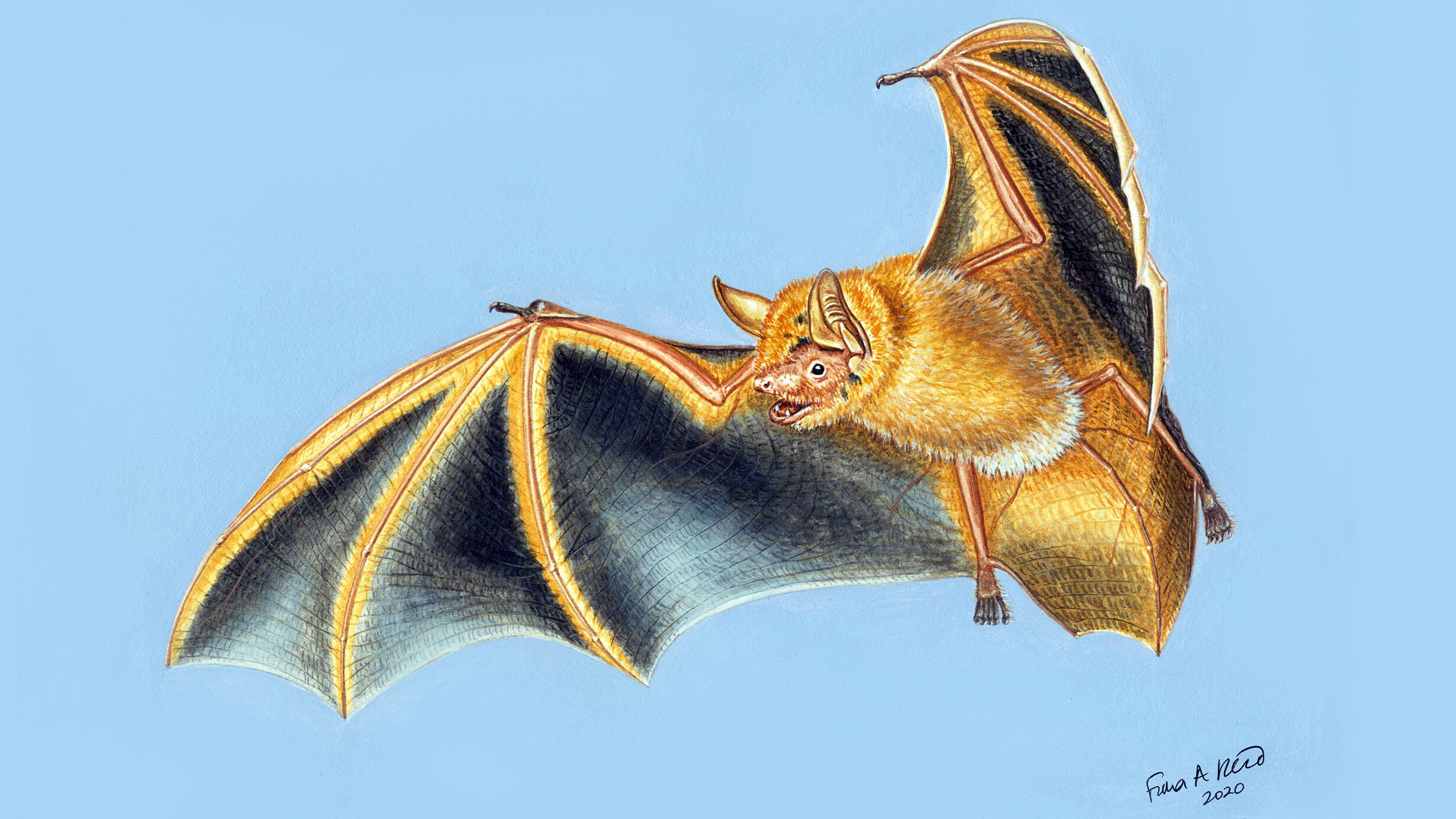 Myotis nimbaensis is a new species of bat found in the Nimba Mountains of West Africa.
Myotis nimbaensis is a new species of bat found in the Nimba Mountains of West Africa.Fiona Reid
A new species of a striking orange and black bat from the Nimba Mountains in West Africa has been described by scientists from the Museum and Bat Conservation International.
The discovery of the species, named Myotis nimbaensis in recognition of the Guinea mountain range it inhabits, highlights the importance of sub-Saharan “sky islands”—mountain peaks about a mile above sea level that are home to habitats that are drastically different from surrounding lowlands— to bat diversity.
© Bat Conservation International
“In an age of extinction, a discovery like this offers a glimmer of hope,” said Winifred Frick, chief scientist at Bat Conservation International and an associate research professor at the University of California, Santa Cruz. “It’s a spectacular animal. It has this bright-orange fur, and because it was so distinct, that led us to realize it was not described before.”
The Nimba Mountains are home to exceptional biodiversity, including bats. In collaboration with the local mining company, Société des Mines de Fer de Guinée (SMFG), Frick and her colleagues at Bat Conservation International and the University of Maroua in Cameroon conduct field surveys in the region’s natural caves and mining tunnels, known as adits, that were built in the 1970s and 1980s and have since been colonized by bats.
The adits are particularly important to one species of bat—the Lamotte’s roundleaf bat, Hipposideros lamottei—that is listed by the International Union for Conservation of Nature (IUCN) as critically endangered. Much of its known population lives in the adits, which are in different states of collapse and will eventually disappear.
In 2018, the researchers found something peculiar: a bat that looked nothing like Lamotte’s roundleaf bat and did not match the descriptions of any other species that they knew occurred in the area. They called on Curator Nancy Simmons, a bat expert and chair of the Museum’s Department of Mammalogy, for help.
“As soon as I looked at it, I agreed that it was something new,” said Simmons, the lead author of a new paper about the species, which was published in the journal American Museum Novitates this week, and Bat Conservation International Board member. “Then began the long path of documentation and gathering all the data needed to show that it’s indeed unlike any other known species.”
Watch a video with Curator Nancy Simmons in the field in South America.
Through morphological, morphometric, echolocation, and genetic data, including comparative data from collections at the Museum, the Smithsonian National Museum of Natural History, and the British Museum, the scientists described the new species, which the researchers expect is also critically endangered.
This study is part of an ongoing effort critical to help the Nimba Mountain bat populations survive. Bat Conservation International and the mining company SMFG have already started working together to build new tunnels, reinforced to last for centuries and in habitat away from the mining project, for the Lamotte’s roundleaf bat. And although little is known yet about the population and range of Myotis nimbaensis, these efforts wll likely help this newly identified species as well.